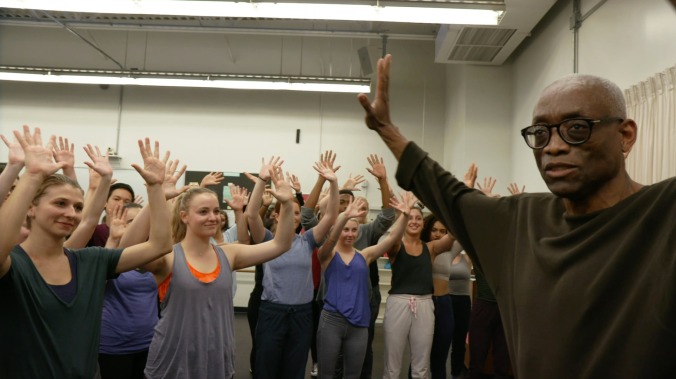Can You Bring It takes a fascinating look at a landmark dance piece of the AIDS era
This documentary chronicles the history of the acclaimed “D-Man In The Waters”
Film Reviews Can You Bring It
Photo: Kino Lorber
“We were working through the plague,” explains Bill T. Jones, the renowned dancer and choreographer whose now-canonical dance piece, “D-Man In The Waters,” premiered at the height of the AIDS epidemic in 1989. It was a time of crisis for Jones and his New York City-based dance troupe, several of whose members would ultimately die from the disease. For Jones, one of several voices featured in Can You Bring It: Bill T. Jones And D-Man In The Waters, his acclaimed dance is an act of mourning and healing, providing a safe space and a “place to grieve” for its performers—and, in theory, for the successive generations of dancers looking to tackle the gruelingly demanding piece.
Co-directed by veteran cinematographer Tom Hurwitz and Rosalynde LeBlanc, a former member of the Bill T. Jones/Arnie Zane company, Can You Bring It tells the history of Jones’ landmark dance while illuminating its legacy and enduring resonance. The documentary combines interviews with original company members and archival footage with vérité-style training scenes from a college dance troupe’s reinterpretation of the piece. The result is a kaleidoscopic portrait of an artist that simultaneously taps into the personal and political dimensions that inform the creation of art.
Hurwitz and LeBlanc look back at Jones’ life from his happy beginnings in the New York counterculture scene and his pivotal relationship with Arnie Zane, a photographer who would become his romantic and artistic partner. Together, the men assembled a top postmodern dance troupe, a diverse community of fellow performers who bonded deeply because of the company’s collaborative choreographic methods. Before long, the scourge of AIDS would devastate their ranks; among those they lost were Zane and Demian “D-Man” Acquavella, a particularly eccentric member of the group.
As Jones and other dancers who belonged to the original company remember this harrowing period, a new generation of student dancers receive instruction from LeBlanc—their spiritual guide and head coach—and occasionally Jones himself. The film touches on the difficulties of reworking the piece with different arrangements of people: We see a heftier student attempt to nail a move in which he leaps off the back of his much smaller classmate, while a breakdancer scrambles to make up for his lack of formal training. But mastering the steps is only one component of the dance. LeBlanc leads a series of open discussions about its political origins and emphasis on collective movement, emphasizing the piece’s roots in the rage and trauma produced by the AIDS crisis and inviting her students to identify contemporary social issues that similarly move them.
The film stumbles here in its drawing of generational parallels. The young dancers consider the country’s failure to properly address gun violence and campus rape culture, our culture’s inability to take action, and the counterproductive nature of social media activism. It’s an admirable effort that attempts to show how “D-Man” is universal in its ability to express collective anguish and struggle no matter the context, but there’s nonetheless an artificial quality to such obvious striving for emotional authenticity. The film would have us believe that channeling one’s political frustrations is key to nailing the performance, but there’s no sense that these young dancers actually achieve this beyond flat announcements that these issues are on their minds. When they finally rehearse the piece to LeBlanc’s standards, it seems like the product of hard training rather than any existential breakthrough. Their process looks more impersonal still when compared that to the intensity and passion with which Jones and company recall the tragedies they endured.
Yet there’s no denying the exhilarating power of the dance; sprinkled throughout the documentary are stylized looks at a professional company’s performance of the piece, the camera twirling around the dancers as they leap and thrust their bodies into the air. Choreographed to the first movement of Felix Mendelssohn’s Octet For Strings, “D-Man” is both gritty and jubilant in its raw athleticism, demanding not just spectacular physical feats from its dancers but also vulnerability and verve. The complexity of its emotional expression is no random miracle. The film’s most moving revelations emerge when it highlights the intersection of real experience and the creative process. For instance, as the interview subjects recall the day of Zane’s death, and the paramedics’ fearful refusal to touch him, we learn that a part of the dance was directly inspired by the need for Zane’s friends and loved ones to carry his body into the ambulance themselves. Moments like these remind us that art as seemingly inaccessible and abstract as contemporary dance does not exist in a vacuum; on the contrary, some of the most unforgettable works of art are inextricable from the conditions that provoked them.